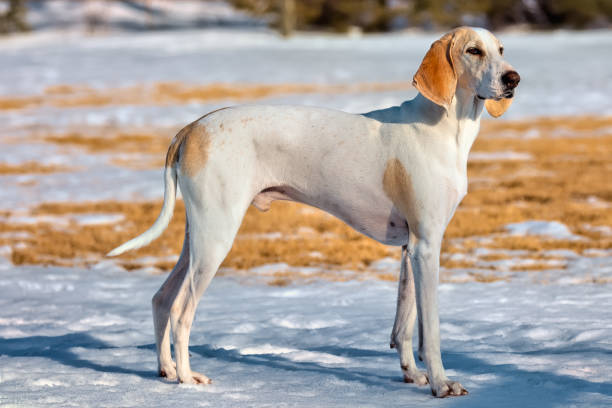The Porcelaine dog, also known as the French Hound, is a rare and elegant breed that hails from France. With its stunning white coat, graceful appearance, and noble heritage, it’s no wonder that this breed has captured the hearts of dog lovers around the world.
In this blog, we’ll delve deeper into the history, characteristics, and personality of the Porcelaine dog, and explore why it’s such a unique and special breed.
History of the Porcelaine Dog
The Porcelaine dog has a rich and fascinating history that dates back to the 18th century in France. It was bred by the French aristocracy to hunt small game, such as rabbits and hares, and was prized for its exceptional tracking skills and keen sense of smell.
The breed’s name comes from its porcelain-like coat, which is pure white with black or tan markings. It’s believed that the Porcelaine was created by crossing various hounds, including the Montaimboeuf, Artois, and Grand Gascon-Saintongeois.
Over the centuries, the Porcelaine dog’s popularity declined, and it became a rare and endangered breed. However, thanks to the efforts of dedicated breeders, it has made a comeback in recent years and is now recognized by the American Kennel Club (AKC) as a member of the hound group.
Characteristics of the Porcelaine Dog
The Porcelaine dog is a medium-sized breed, standing between 22 and 23 inches tall at the shoulder and weighing between 55 and 62 pounds. Its most distinctive feature is its elegant, white coat, which is short, dense, and silky to the touch.
In addition to its striking appearance, the Porcelaine dog is known for its exceptional sense of smell and tracking ability. It’s a highly skilled hunter, with a keen nose and a strong drive to pursue the game.
The personality of the Porcelaine Dog
The Porcelaine dog is known for its friendly, gentle, and affectionate personality. It’s a loyal and devoted companion that loves to be around people and is great with children.
Despite its hunting background, the Porcelaine dog is not an aggressive breed. It’s generally calm and easygoing and makes a great family pet for those who are willing to provide it with plenty of exercise and attention.
Training and Exercise Needs of the Porcelaine Dog
Like all hounds, the Porcelaine dog has a strong prey drive and a tendency to follow its nose, which can make it difficult to train. However, with patience, consistency, and positive reinforcement, it can be trained to obey basic commands and even excel in activities such as obedience and agility.
The Porcelaine dog is an active breed that requires plenty of exercises and mental stimulation to stay happy and healthy. It enjoys long walks, runs, and hikes, and also loves to play games such as fetch and hide-and-seek.
The Porcelaine dog is a rare and beautiful breed that combines elegance, grace, and hunting prowess. With its pure white coat, friendly personality, and exceptional tracking ability, it’s a unique and special breed that is sure to capture the hearts of dog lovers everywhere.
If you’re considering adding a Porcelaine dog to your family, be prepared to provide it with plenty of exercise, attention, and love. With the right care and training, this noble and ancient breed can make a loyal and devoted companion for many years to come.









